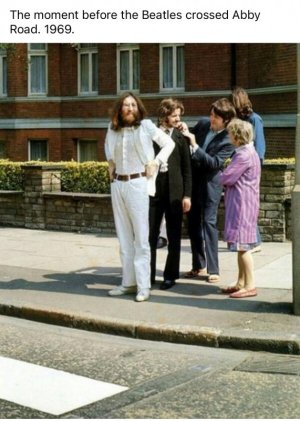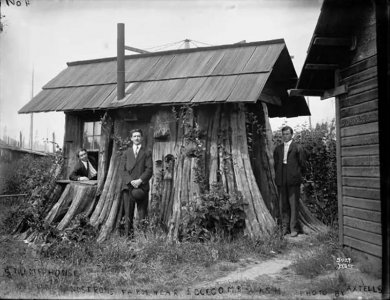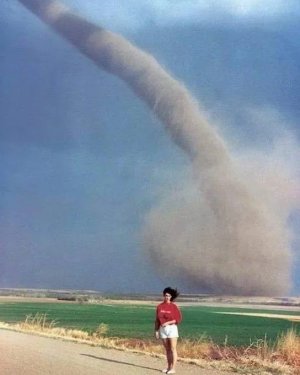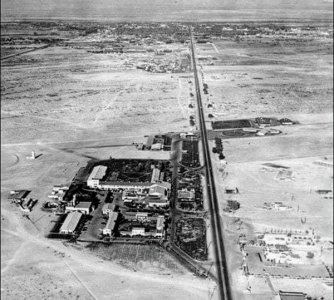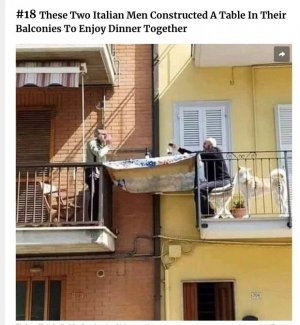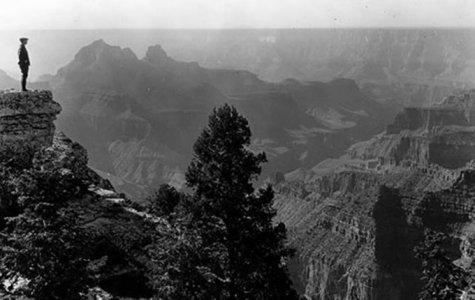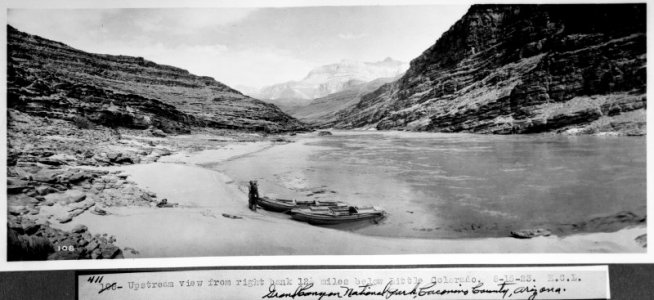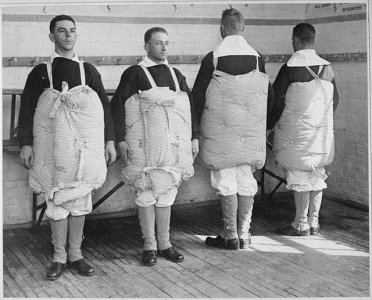You are using an out of date browser. It may not display this or other websites correctly.
You should upgrade or use an alternative browser.
You should upgrade or use an alternative browser.
Repository for Vintage Photographs That Tell a Story - Share Here...
- Thread starter SmoothSeas
- Start date
Mizmo
Well-known Member
- Location
- Ontario, Canada
CinnamonSugar
A Quiet American
O M Gosh. I feel like someone poked a fork in my eye!No story..
I am ancient and I don't think I ever saw a man dressed that way.
........be still my beating heartView attachment 343553
View attachment 343551
PeppermintPatty
🐢. 🐳. 🐢
- Location
- Canada
Thank goodness.No story..
I am ancient and I don't think I ever saw a man dressed that way.
PeppermintPatty
🐢. 🐳. 🐢
- Location
- Canada
This is so cool.
There’s a woman just up the road from us who is building her own home, on a lot she bought , from small trees - mostly birch and pine.
. It’s a bit bigger than this. She’s having a hard time getting electricity to it. The general rule here is that you have to have a septic system and a well to qualify for electricity. Before building this she was living in a modified garbage bin. ( literally )
This is so cool.
There’s a woman just up the road from us who is building her own home, on a lot she bought , from small trees - mostly birch and pine.
. It’s a bit bigger than this. She’s having a hard time getting electricity to it. The general rule here is that you have to have a septic system and a well to qualify for electricity. Before building this she was living in a modified garbage bin. ( literally )
That is interesting. Resourceful and possibly cheaper. If legalities don't get ironed out it may not be.
PeppermintPatty
🐢. 🐳. 🐢
- Location
- Canada
I think she will get busted sooner or later. What’s she’s doing isn’t legal but we certainly aren’t going to rat her out. I think she’s very brave to be doing what she’s doing. She’s got to be in her 50’s or 60’s. It’s actually impressiveThat is interesting. Resourceful and possibly cheaper. If legalities don't get ironed out it may not be.
Fans in NYC following a game of the 1912 World Series by watching a Playograph. What's a playograph ?
From the Wikipedia:
"
The Playograph was a machine or an electric scoreboard used to transmit the details of a baseball game in the era before television. It is approximated by the "gamecast" feature on some sports web sites: it had a reproduction of a baseball diamond, with an inning-by-inning scoreboard, each team's lineup, and it simulated each pitch: a ball, a strike, a hit, an out, and so on.
A telegraph operator, who was watching the game live, transmitted the details of the baseball game to the two people operating the Playograph. An "X" on the diamond represented a runner; an "O" was displayed if the runner got out. A ball was moved animatronically to show fastballs or curveballs, where it was hit, and so on."
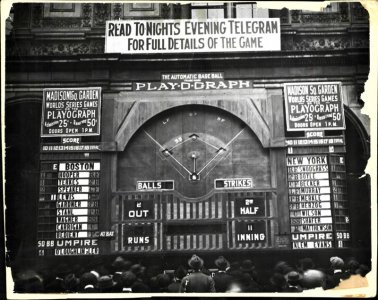
From the Wikipedia:
"
The Playograph was a machine or an electric scoreboard used to transmit the details of a baseball game in the era before television. It is approximated by the "gamecast" feature on some sports web sites: it had a reproduction of a baseball diamond, with an inning-by-inning scoreboard, each team's lineup, and it simulated each pitch: a ball, a strike, a hit, an out, and so on.
A telegraph operator, who was watching the game live, transmitted the details of the baseball game to the two people operating the Playograph. An "X" on the diamond represented a runner; an "O" was displayed if the runner got out. A ball was moved animatronically to show fastballs or curveballs, where it was hit, and so on."

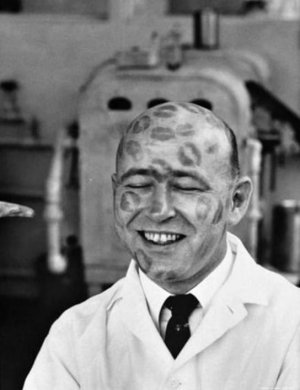
Oris Borloff
Member
CinnamonSugar
A Quiet American
Uhhhh, I would not be standing there having my pic taken!This photo was the winner in an amateur photo contest. It appeared as the cover on a supplement to the Sunday Omaha World-Herald which was called The Magazine Of The Midlands. Where I found this copy of the pic said it was April of 1989.
View attachment 344773
Oris Borloff
Member
At the time there was a lot of flack about tornado safety, do's and don'ts. The truth is that tornado had already passed and it was moving away from the subject. As I recall it was taken by the mother who had her daughter stand out there so she could get the pic. It wouldn't have been my first thought either.Uhhhh, I would not be standing there having my pic taken!
Mizmo
Well-known Member
- Location
- Ontario, Canada
RadishRose
SF VIP
- Location
- Connecticut, USA

Cowboys enjoy drinks at the Equity Bar in Old Tascosa, Texas, 1907.
These places were also called “watering troughs, bughouses, shebangs, cantinas, grogshops, and gin mills".
RadishRose
SF VIP
- Location
- Connecticut, USA

Men playing Faro at the Orient Saloon in Bisbee, Arizona, 1903.

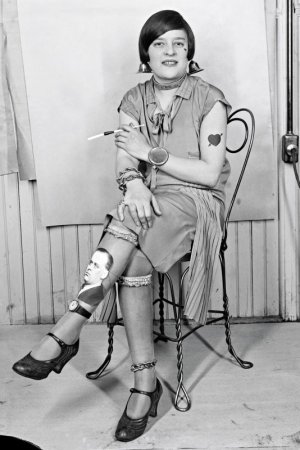
1926: “This girl has all of the trends and she’s not loath to wear them at once: bell earrings, a dog collar worn as a necklace, a large beauty spot on her cheek, an ivory cigarette holder, a design to cover the vaccination mark on her arm, heavy bracelets, an anklet, a photo of a boyfriend on her stocking, an anklet watch, fancy garters worn below the knee and a mirror fastened to her wrist.”
RadishRose
SF VIP
- Location
- Connecticut, USA
After it spent nearly 350 years underwater, historians unearthed a treasure trove of 17th-century artifacts seemingly frozen in time aboard the “Palmwood wreck.” Among the ship’s cargo were several remarkably preserved gowns, which reveal the tastes and daily lives of some of the richest women of the era.
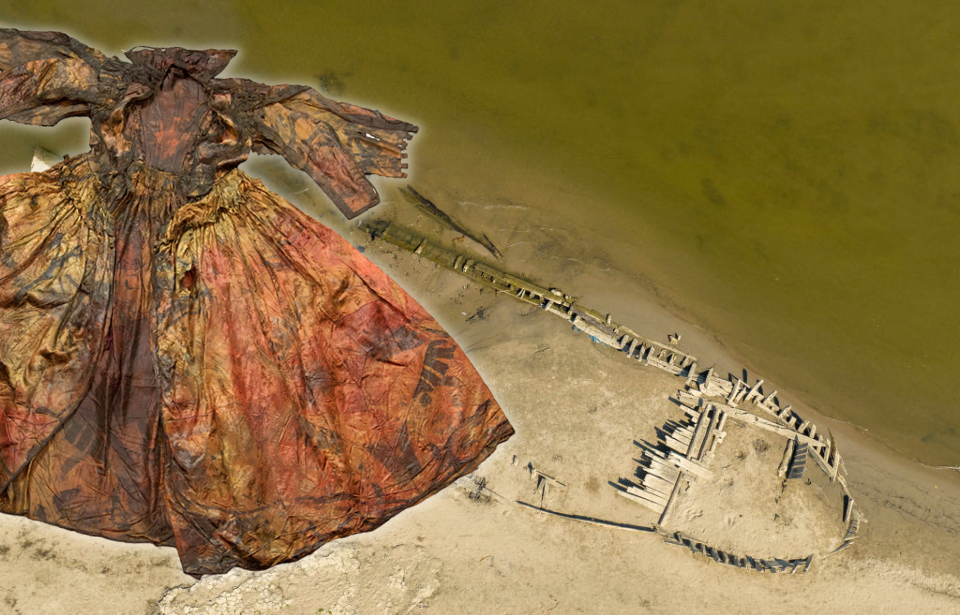
https://www.thevintagenews.com/2023/06/13/shipwreck-clothing/

https://www.thevintagenews.com/2023/06/13/shipwreck-clothing/
Photographer-Edward Sheriff Curtis
An Apsaroke mother and child. 1908.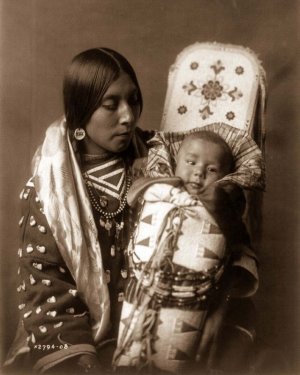
A Rare Photo Collection of Native American Life in the Early 1900s - Rare Historical Photos
RadishRose
SF VIP
- Location
- Connecticut, USA
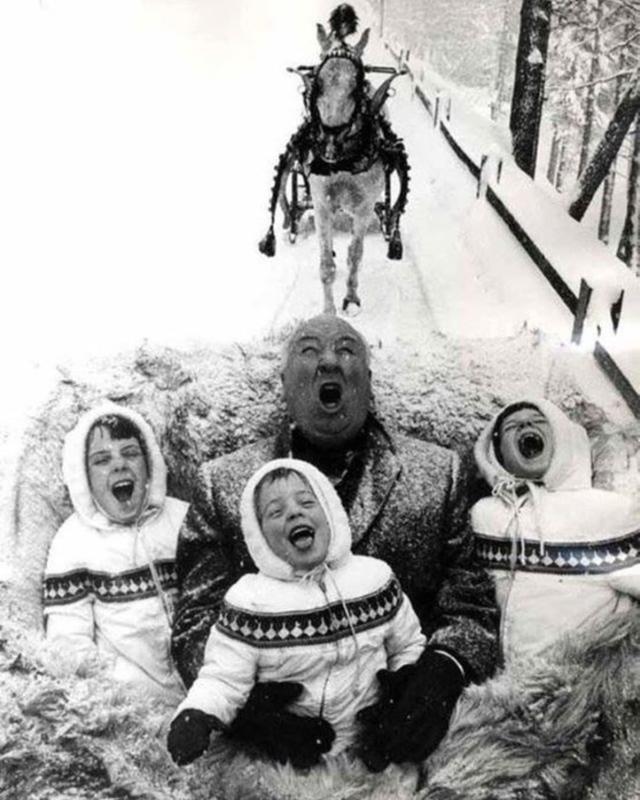
Alfred Hitchcock enjoys a sleigh ride with his grandchildren circa 1960.
JBR
Well-known Member
Could be a grandmother of one of us.View attachment 347669
1926: “This girl has all of the trends and she’s not loath to wear them at once: bell earrings, a dog collar worn as a necklace, a large beauty spot on her cheek, an ivory cigarette holder, a design to cover the vaccination mark on her arm, heavy bracelets, an anklet, a photo of a boyfriend on her stocking, an anklet watch, fancy garters worn below the knee and a mirror fastened to her wrist.”


